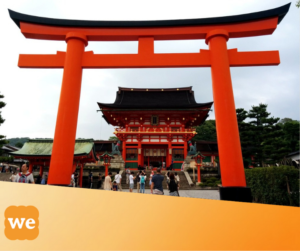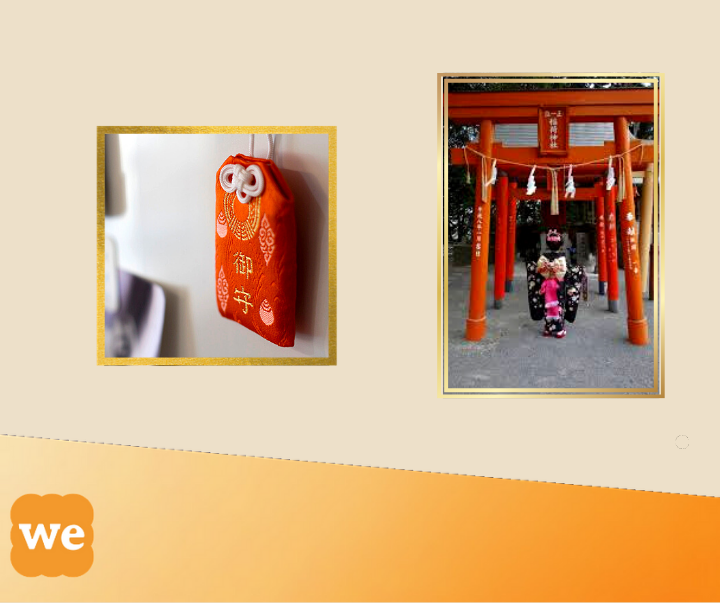
Do you know how to enter a Shinto shrine? And how to correctly purify yourself before paying respect to a kami?
Here is our guideline about a proper Shinto shrine visit, and notions on the objects you will find there. Try to follow these simple steps to immerse yourself in the Japanese culture.
Go to paragraph 2 to discover the famous legend about Japan’s three Sacred Treasures and the most famous Shinto shrines where they are preserved.
How to visit a Shinto Shrine: Necessary Steps
Shinto is one of the two main faiths in Japan, together with Buddhism. To practice it and pray for kami, 神, Shinto gods, you will go to a Shinto shrine. You want to know that there is a formal way before entering it, as we will describe below. You can check what is Shinto, its basic beliefs and origin, and particular practices and festivals in this article.
Entering a Shinto Shrine: the Purification Process
First, bow before crossing the Torii. After walking a while (depending on the size of the shrine), you will find a rack to “wash your hands” to purify yourself. It’s the water ablution, believed to wash away your impurities. You can take the wooden ladle with your right hand and pour water over your left hand. Do the same with the other hand to wash them both. You’ll also have to rinse your mouth with your left hand and wash it again. Finally, the remaining water inside the ladle will rinse the ladle itself if you hold it vertically. Once you have done this, you can replace the ladle on the rack and continue into the shrine itself. Just before reaching the main shrine, you will pass through a pair of sacred stone guardians, usually in the form of lions or dogs (or foxes in the case of the Inari shrine). These are komainu, and they protect the holy site from evil spirits.

How do You Pray in a Japanese Shrine?
Once you have arrived at the main shrine, you can pay respect to the kami:
- first, look presentable and stand up straight,
- bow deeply twice,
- put your hands together and clap twice,
- make a wish and give thanks to the kami (generally with the 5 yen coin, the one with the hole)
- Finally, bow once deeply.
After making a small offering, don’t miss the chance to get your omikuji, おみくじ, from the Miko or a nearby box. It’s a random fortune on a piece of paper that will predict your chances of future success in your hopes, relationships, health, and fortune in life. If you find the “bad luck” sign on your omikuji, then tie it up to the nearest tree and go back home. But don’t worry: it’s a sign that something happy will happen to you.
A good souvenir is also a talisman or charm called omamori , お守り. This will protect you or wish you good luck in different fields, in general work, health, love, or study.
If the shrine is inside a little wood in the city, you will see a tree or a rock surrounded by a straw rope. It’s a shimenawa, しめ縄, a sacred straw festoon that designates the holy space or thing where you can sense the divine.

Some Shinto worshippers bowing to a sacred tree where a shimenawa is tied.
The shintai, 神体, meaning “the body of the kami”, are common objects like mirrors, stones, swords, statues, or images of divinity. They are placed in the innermost part of the shrine, hidden inside boxes so that even the priests don’t know what they look like. Unlike other religions, they are not the objects of direct worship by the followers.
Just note that not even all Japanese do these formal greetings: it's like doing the sign of the cross with holy water right after entering a Catholic church.
5 Different Shinto Shrines and their Legends
The holy site of Shinto Religion - The Ise Grand Shrine
The holy site of Shinto religion is the Ise Jingu, 伊勢神宮, the Ise Grand Shrine, located in Mie prefecture. It’s a complex with 123 shrines in the heart of a sacred forest. The main one is dedicated to the goddess of the sun, Amaterasu. Today is a major pilgrimage center and a famous tourist spot. Records state that the shrine is up to 2,000 years old and that every 20 years (for the past 1,300 years) it’s rebuilt anew. This is a Shinto practice that succeeded first in passing the building techniques from one generation to the other and second in maintaining sacred places as new, recalling the circularity idea of death and rebirth.
It’s the home of the Sacred Mirror, one of the Three sacred treasures of Japan.
What are the Three Sacred Treasures of Japan?
The three Imperial Regalia of Japan are a sword, a mirror, and a jade jewel. Their origins are kept mysterious, but according to the myth they were used by kami in ancient times. Today, they are considered the symbols of the imperial family, and copies of them are used during the coronation ritual. Because they are considered sacred objects, none have ever seen them, even the emperor himself. They are secretly kept in three different sanctuaries.
The Yata no kagami, 八咫鏡, is the most precious one. According to Japan’s folklore, mirrors can show the truth. It was created by the goddess Ishikoridome, to reconcile Amaterasu with his unstable brother Susanoo. After a fierce fight between the two of them, the goddess of the sun ran away into a cavern, bringing all the world's light with her. Thanks to the mirror, which reflected the brightness of her sister, Susanoo managed to restore the light in the world. This is why it represents the emperor’s wisdom, today.
The Ama no Murakomo, 天叢雲剣, (literally, “heaven’s sword) later Kusanagi no tsurugi, symbolizes the emperor’s courage and valor. It is said to be kept in Nagoya's Atsuta Jingu. A legend written in the Kojiki says that Susanoo saved three girls with it, killing an eight-headed snake.
The Yasakani no Magatama, 八尺瓊勾玉, was part of a necklace worn by Ame no Uzume, the goddess of mood. She tried to lure Amaterasu out of the cavern during the days of darkness. Thanks to a peculiar ballet and the brightness of the jewel, Ame no Uzume succeeded in attracting Amaterasu, who was then taken out by Susanoo and the mirror. The jewel is kept in the Tokyo Imperial Palace. It represents the emperor's benevolence.
These three treasures were then brought to earth by the son of Amaterasu, who is the ancestor of the first emperor of Japan.
Atsuta Jingu
Atsuta Jingu, 熱田神宮, is the biggest Shinto shrine in the city of Nagoya. According to the Kojiki, an ancient Japanese chronicle of Myths and legends, it’s the house of the Kusanagi no Tsurugi.
The shrine was also maintained by donations from benefactors, including the Tokugawa family and the other two great unifiers of Japan, Oda Nobunaga and Toyotomi Hideyoshi. As proof of it, a protective wall was built around Atsuta Shrine by order of Oda himself, the warlord of Western Aichi (Nagoya’s prefecture). Back in 1560, he prayed for victory at Atsuta, and then won the battle of Okehazama, defeating 25,000 samurai of Imagawa Yoshimoto with only 2,500 men.
Atsuta shrine has been an important Shinto center since ancient times, called “Atsuta-Sama” and counting nine million visitors annually.
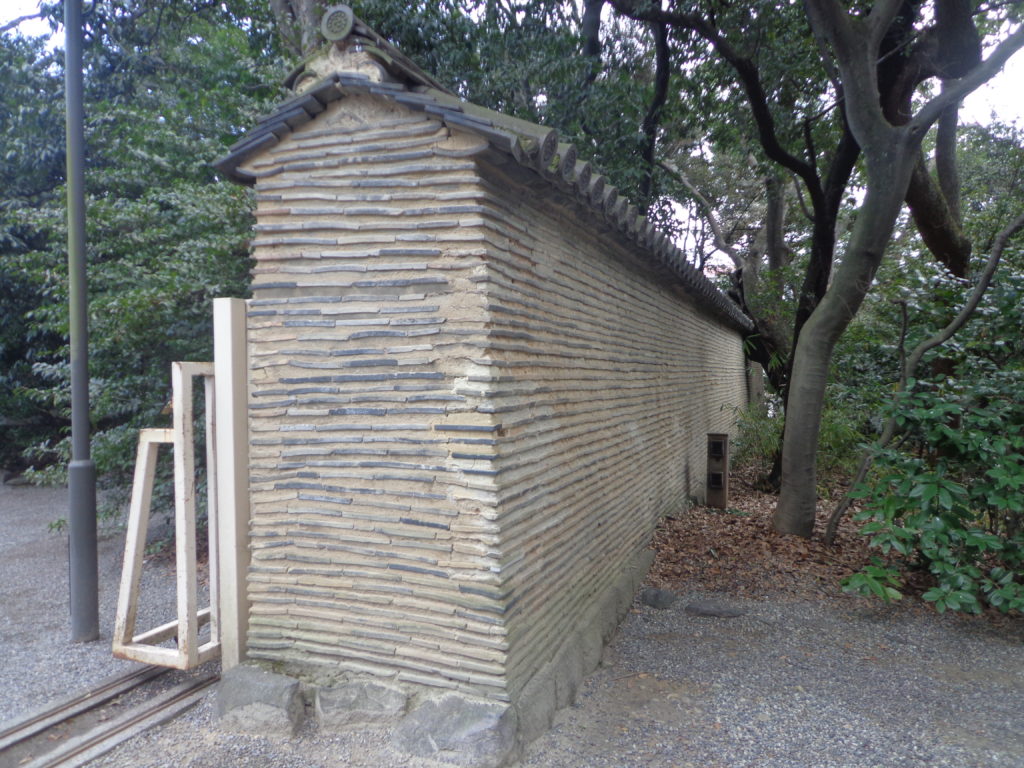
Rests of the protective wall built by Nobunaga around the Atsuta shrine
The Realm of Torii - Fushimi Inari
Fushimi Inari, 伏見稲荷, a Shinto sanctuary in Kyoto city, is the realm of torii. Thanks to its countless tunnels of red torii, which will lead you to the peak of Mount Inari, where it was built, it’s a famous tourist location. As its name suggests, it is dedicated to the god of rice, protector of merchants and artisans. Around the temple, you will notice kitsune’s statues, some of them holding a key in their mouth: it is said to be the key of the rice granary.

One of the torii tunnels at Fushimi Inari
The Shinto Shrine of a Deified General - Nikkō Tōshōgu
Nikko Toshogu, 日光東照宮, is the mausoleum where the remains of Tokugawa Ieyasu are kept. He founded the Tokugawa shogunate, which gave the name to an important Japanese era, from 1603-1868 (also known as the Edo period). Tokugawa Ieyasu was one of the three great unifiers of Japan, and the first one to become Japan’s “Shōgun” (great general). The strong personalities of these three leaders contributed to the end of civil wars and the final unification of Japan in 1615. At the death of Ieyasu in 1616, the Nikko sanctuary was dedicated to him. He was then worshipped as a new god in Japan, with the name of “Tosho Daigongen”, 東照大権現, “the Great Gongen, the light of the East”. This was done according to his last wishes. However, he also expressed the will to be buried in the Kunozan Toshogu mausoleum in Shizuoka prefecture. None of the two mausoleums was ever opened to verify where the relic is, and so it is common opinion to believe that Ieyasu still rests in Nikko.
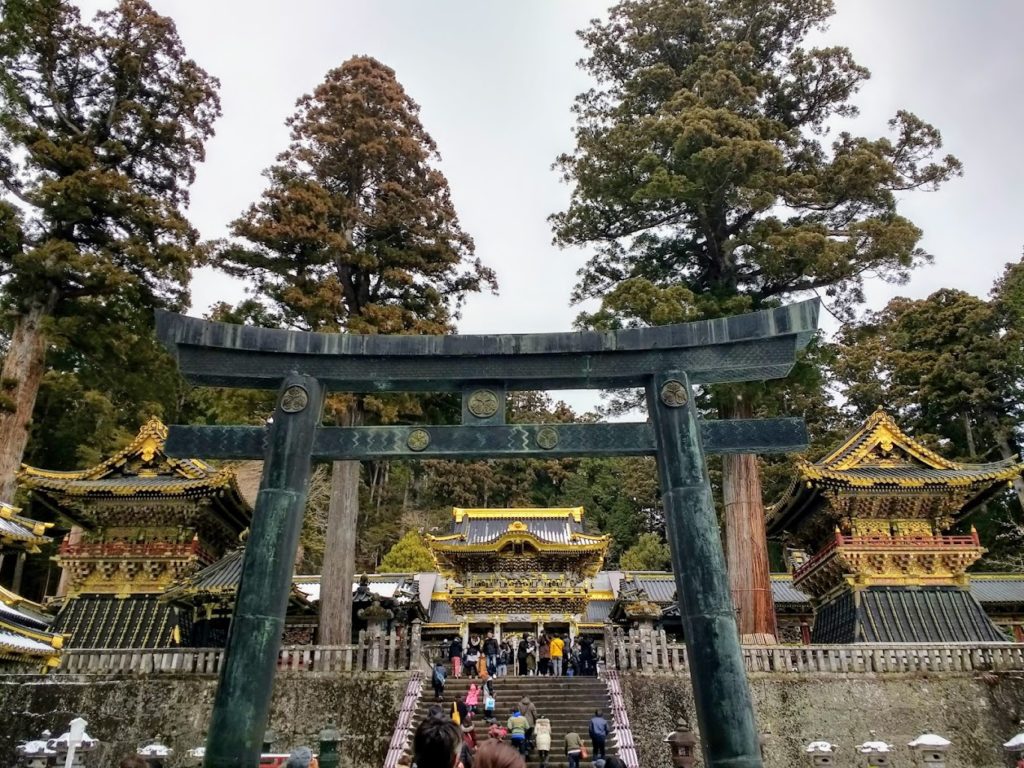
The entrance Torii at Nikko Toshogu
The Golden Temple - Kinkaku-ji Temple, Kyoto
The famous Kinkakuji, 金閣寺, the Temple of the Golden Pavilion, is a Zen Buddhist temple in Kyoto. Back in 1397 when it was built, it was a villa owned by shogun Ashikaga Yoshimitsu. Following his wishes, after he died in 1408, the pavilion became a temple. Its peculiarity is in the gold color: the temple is covered with pure gold leaf. You can admire this elegant complex walking through the zen garden. It was arranged to represent famous places in Chinese and Japanese literature, with little ponds and rock compositions that will ideally connect the complex to the outside world. It has also inspired the construction of the Ginkakuji, the temple of the Silver Pavilion, by the nephew of Yoshimitsu.
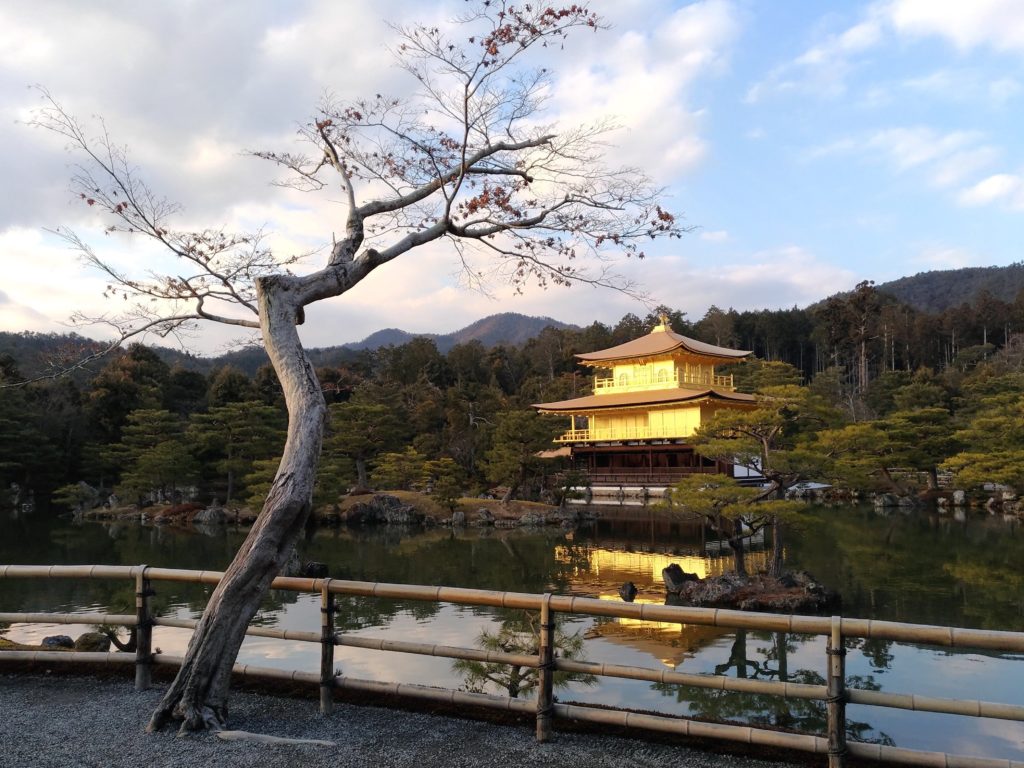
Author: Valeria (graduated from Ca’Foscari University Japanese Studies)

